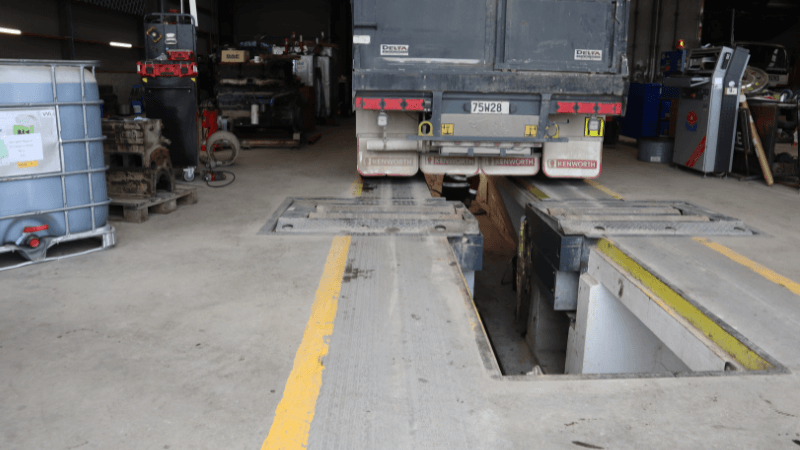Single-level or double-level office – What’s right for you?
.png?width=800&height=450&name=single%20vs%20double%20storey%20(1).png)
Building a new property for your business to operate from is an exciting time, indicating growth, and new opportunities. There’s a lot to ponder when it comes to the design and cost of your office build, including whether to make your office single-level or two-storey.
While a single storey saves costs and encourages workflow, a double level makes the most of your workshop’s ceiling height. Depending on your site and objectives, spending the extra money could be the right thing to do.
Often, it’s assumed that adding an extra floor won’t cost much because the roofline is already double the height for the rest of the build. However, this isn’t always the case so there are several considerations to make an informed decision for your new build.
In this article, we look at what to consider as part of your decision-making process before deciding on a single or double-level office for your new build.
Considerations for designing an office
It’s vital that your office space meets your business’s current requirements but also has the flexibility to grow along with your business. At XL Structural we have the in-house expertise to guide you through the design process, accounting for the following key considerations:
- Functionality
- Comfort
- Accessibility
- Safety
- Flexibility
- Sustainability
- Budget
Check out our helpful blog articles for more design tips and office planning terminology.
Base costs of the structure
One of the contributing factors to the increased cost per square metre of a double-storey build is the extra structural requirements to support the mid-floor. From previous comparisons, the base costs of a mid-floor structure can often be $500 to $700 per square metre more than the floor structure of a single-level build.
Fire Protection
Fire protection requirements also need to be met to ensure adequate protection between floors. This may include a fire-rated floor structure, fire-rated linings and extra fire-egress stairs. This all adds to the cost of building two-level offices in comparison to single-level offices.
Accessibility
Compliance with accessibility standards often requires the installation of features such as multiple staircases, elevators, and ramps. These features are crucial for safety and inclusivity but will contribute to overall project expenses.
Operational Costs
Beyond construction, operational costs play a pivotal role in the long-term financial outlook of office spaces. For example, double-storey layouts often incur higher heating, ventilation, HVAC, and maintenance expenses. Double-storey spaces also require a second set of toilet facilities, kitchen facilities, or coffee stations.
Additionally, maintenance tasks might require specialised equipment and access requirements for each floor. Understanding these operational costs is essential for forecasting ongoing expenses.
Land availability vs build cost
While double-storey designs have higher construction costs, they offer the potential to build up rather than out. This can be more cost effective when you are limited by the size of your block of land or the land prices outweigh the costs of building a double level.
Space utilisation
Single-storey office designs typically offer a more open and flexible layout, making it easier to change the space as your business changes and promoting efficient use of every corner of the office. On the other hand, double-storey offices typically result in building inefficiencies due to things like staircases, elevators and fire-protected lobby areas.
However, once the proposed office size exceeds 400 to 500 square metres, we often see the benefits of double-level offices become more pronounced. At this size, the office area doesn’t lose as much space (as a percentage) for stairs, lobby spaces and extra facilities.
They may also have the operational advantage of having lunchrooms and executive boardrooms separated from the main office area. With more than 400 to 500 square metres, double-level designs also maximise the utilisation of land.
To determine the most suitable design for your office and minimise wasted space, you must carefully evaluate their spatial requirements and workflow. By maximising space utilisation, you can create a more efficient and productive work environment for your employees.
Impact on workflow
The office layout plays an important role in fostering collaboration, workflow, and employee interaction.
In double-storey offices, teams dispersed across different levels may face challenges in communication and collaboration, potentially hindering business productivity. Equally, for some businesses, it may help productivity to have some teams working separately from others.
Open-plan, single-storey designs promote a more cohesive working environment, facilitating communication and collaboration among staff. However, if the space is sprawling across a large footprint, this may be impacted.
Business owners should weigh the importance of interpersonal dynamics and teamwork against the benefits of a multi-storey space.
Visual appeal
A double-storey building design commands attention and can significantly influence the visual appeal, street presence, and perceived prestige of your office, business and brand. This is particularly effective when potential customers or clients visit your site, or in industries where prestige and professionalism are paramount.
However, single-storey designs offer simplicity and accessibility so the perceived prestige of the building should align with the business's brand identity and target audience preferences.
Retrofitting
When planning a new build for future growth and adaptability, businesses should consider the implications of retrofitting or expanding their office space in the future. Double-storey offices may offer limited flexibility for expansion, as additional levels could require significant structural modifications and compliance with building codes. Alternatively, single-storey designs provide greater flexibility, allowing for easier expansion through extensions or reconfigurations, depending on the site it sits on.
Clients often consider building a single-level office within the workshop area, with the idea of building a second level directly above as the business grows. However, this could disrupt office operations and may be impractical.
An alternative option is to build a single-level office in front of the warehouse. This allows for the potential construction of a smaller double-level office directly behind the initial office in the warehouse's first bay, avoiding the need to build above existing offices, utilising the existing building footprint, and presenting a cost-effective way to expand.
Retrofitting considerations include the feasibility, costs, and disruption associated with modifying existing structures to accommodate evolving requirements. Businesses should assess their long-term needs and growth projections to determine the most cost-effective approach now and into the future.
The best way to build an office block
While building costs may typically be higher for double-level office construction, it's crucial to consider other aspects such as space utilisation, workflow impact, visual appeal, retrofitting possibilities, and long-term operational expenses. Each factor plays a significant role in deciding the most suitable design for your business's needs and objectives.
For more advice on building an office block or mezzanine, read our full article about the best building methods for office layouts.


